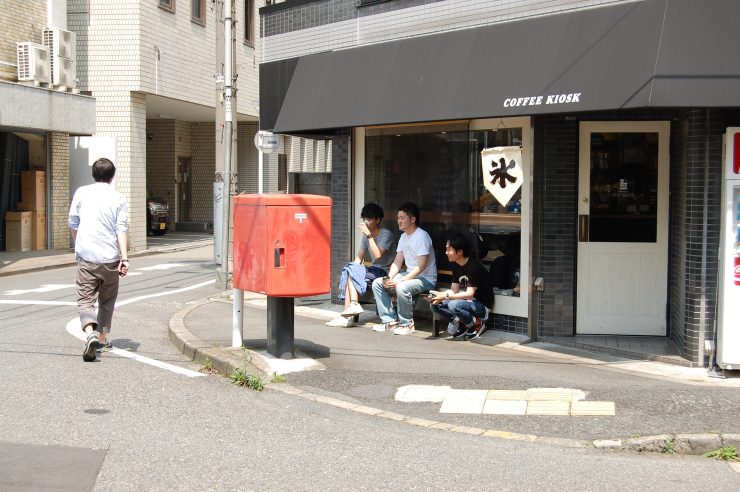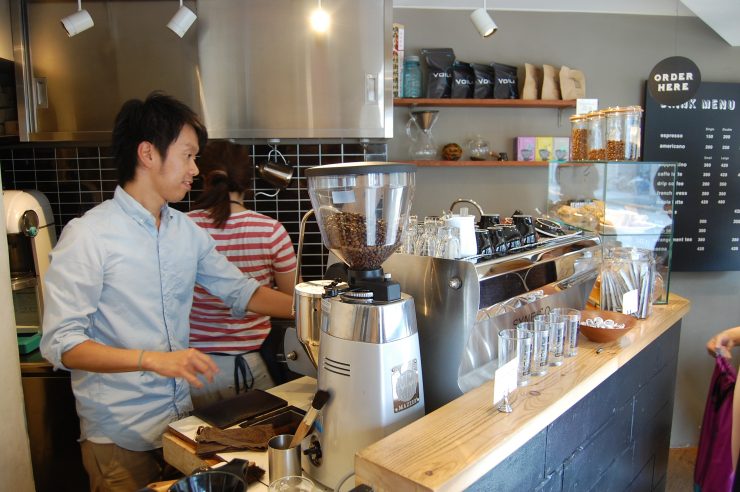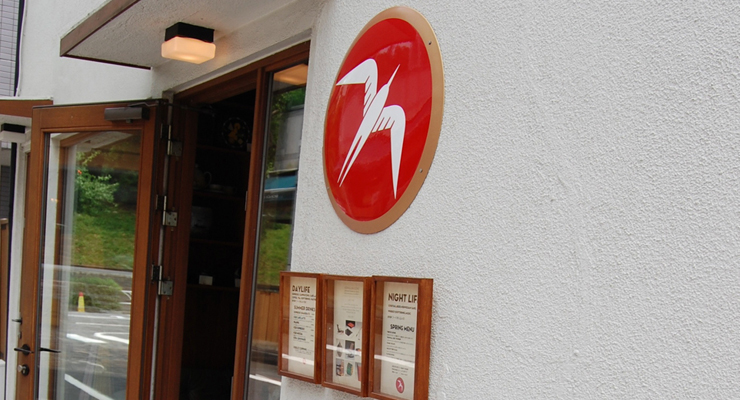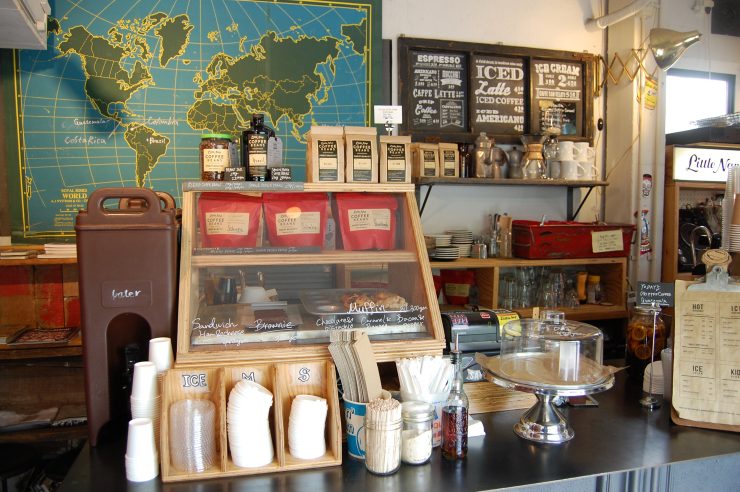Harajuku, home to many famous coffee shops, is often referred to as the “coffee belt” of Tokyo. A gem in the area is Yoyogi Koen (Yoyogi Park), one of the city’s sprawling green spaces and an ideal spot to go for a walk or to sit on the grass with a cup of joe. The neighborhood also is home to Takeshita Dori, a narrow pedestrian street lined with shops selling over-the-top fashions, where trend-watchers come for a peek into the future. Even if you are not into clothes, walking down Takeshita Dori is a quintessential Tokyo experience to feel the energy and innocence of Japanese youth.
Once you’re done taking in the vibrant Harajuku fashion or relaxing in Yoyogi Koen, you’re going to need a cup of coffee. Harajuku overflows with good options, from tiny neighborhood stands to fashionable outposts from some of the biggest names in Japanese (and Scandinavian!) coffee. We’ve put together this list as a place to start in exploring all that this neighborhood has to offer.
Insider’s Tip: The biggest challenge to visiting Tokyo’s coffee shops is navigating the city. Very few streets in the metropolis have names. It’s best to find new coffee shops using a mobile wi-fi device to connect to the internet, as free access is not that prevalent. Paste the address in Japanese, as sometimes the English address will not come up correctly. The address for each shop in this guide is in English and in Japanese.
Be A Good Neighbor Coffee Kiosk
Shibuya-ku, Sendagaya 3-51-6
渋谷区千駄ヶ谷3-51-6
Be A Good Neighbor Coffee Kiosk can be found by looking for the old red postbox on the corner of this Harajuku side street. A candidate for one of the city’s smallest coffee shops, the only seats are on the bench outside. There is a narrow counter indoors that accommodates four standing, but it’s not conducive to hanging out without feeling like you are in the way, as there is little room for customers to walk by.
Many of those coming and going greet each other casually, and one quickly senses that they are all from the neighborhood. What better name for this coffee kiosk?
Beans here are sourced from roastery Voila Coffee in Kagoshima prefecture, on the southern island of Kyushu. Two or three single-origin beans are on the menu. The menu includes espresso, drip coffee, and beans to go.
Be A Good Neighbor has two other shops in Tokyo:
Roppongi’s Ark Hills South Tower (Minato-ku, Roppongi 1-4-5, Ark Hills South Tower B1)
Tokyo Sky Tree (Sumida-ku, Oshiage 1-1-2, Tokyo Sky Tree Solamachi 2F)
Fuglen
Shibuya-ku, Tomigaya 1-16-11
渋谷区富ヶ谷1-16-11
The original Fuglen shop is in Oslo, which explains the hip, rustic interior. It’s almost like a summer cabin in Northern Minnesota, filled with a Norwegian grandmother’s vintage light fixtures and bric-a-brac.
Floor-to-ceiling glass on one side of the building, open in good weather, welcomes the sunshine and breeze to flow in. Fuglen is a busy shop, filled with both people engrossed in books, typing away at their computers, as well as casual business meetings by small groups.
The mood at Fuglen changes depending on what time of day you visit. During the day it is a coffee shop, as night falls it turns into a cocktail bar that has craft beer and a well-stocked bar, including the artisanal Ichiro whiskey.
No matter the time of day, the comfortable environment encourages settling in. Getting up to leave is often a hard thing to do.
Little Nap Stand
Shibuya-ku, Yoyogi 5-65-4
渋谷区代々木5-65-4
Little Nap Stand is a slice of a building that sits on a tiny lot situated between a busy train line and a quiet residential street. Across the road is a small, hardly used community park. Traffic that passes this shop usually consists of bicyclists or a dolled-up dogs out for a walk with their owner.
The easy-going bearded owner, Daisuke Hamada, is usually in the house. A selection of single-origin beans are available for take-away. There are a few seats inside and a bench in front of the shop.
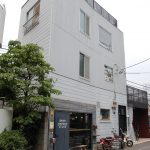
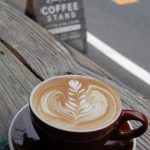
The sound of the train chugging by, gaton-goton gaton-goton, every few minutes is a reminder that time is passing. Stand is an appropriate name, as you want to stay long enough to enjoy your coffee, but not much.
While the environment is laid back, it’s a hard place to settle in for a long time, perhaps it is the size of this tiny shop, which is only a several feet wide at it’s widest point, that discourages lingering.
Streamer Harajuku
Shibuya-ku, Jingumae 3-28-19
渋谷区神宮前3-28-19
Streamer Harajuku is a tall, skinny building made out of old shipping containers. Latte art is splashed onto the second floor window, making it easy to find on this busy street.
Latte art is taken very seriously at many shops in Tokyo, and many baristas have found that inspiration from Hiroshi Sawada, the proprietor of Streamer and a long time latte art competitor. His book, “Hiroshi’s Latte Art and Barista Style”, showcases his work and gives tips for mastering the technique.
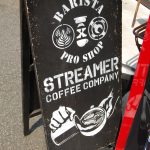
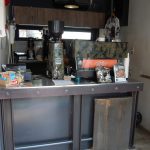
The Harajuku Streamer branch is a gem as it is often quiet on the second and third floor where seating is available. Two opposite walls of windows allow the light to shine in. The heavy beat of hip hop music fills the air.
Climb up the narrow staircase and settle in for a while. The interior of the seating area is about as sparse as things can get. The focus here is on the coffee. The décor is the latte art on your coffee.
Streamer coffee has two other Tokyo locations:
Streamer Shibuya (Shibuya-ku, Shibuya 1-20-28)
Streamer Gohongi, their newest branch. (Meguro-ku, Chuo-cho 2-36)
Yukari Sakamoto, the author of Food Sake Tokyo, offers tours to Tokyo’s markets. This is her first feature for Sprudge.com



